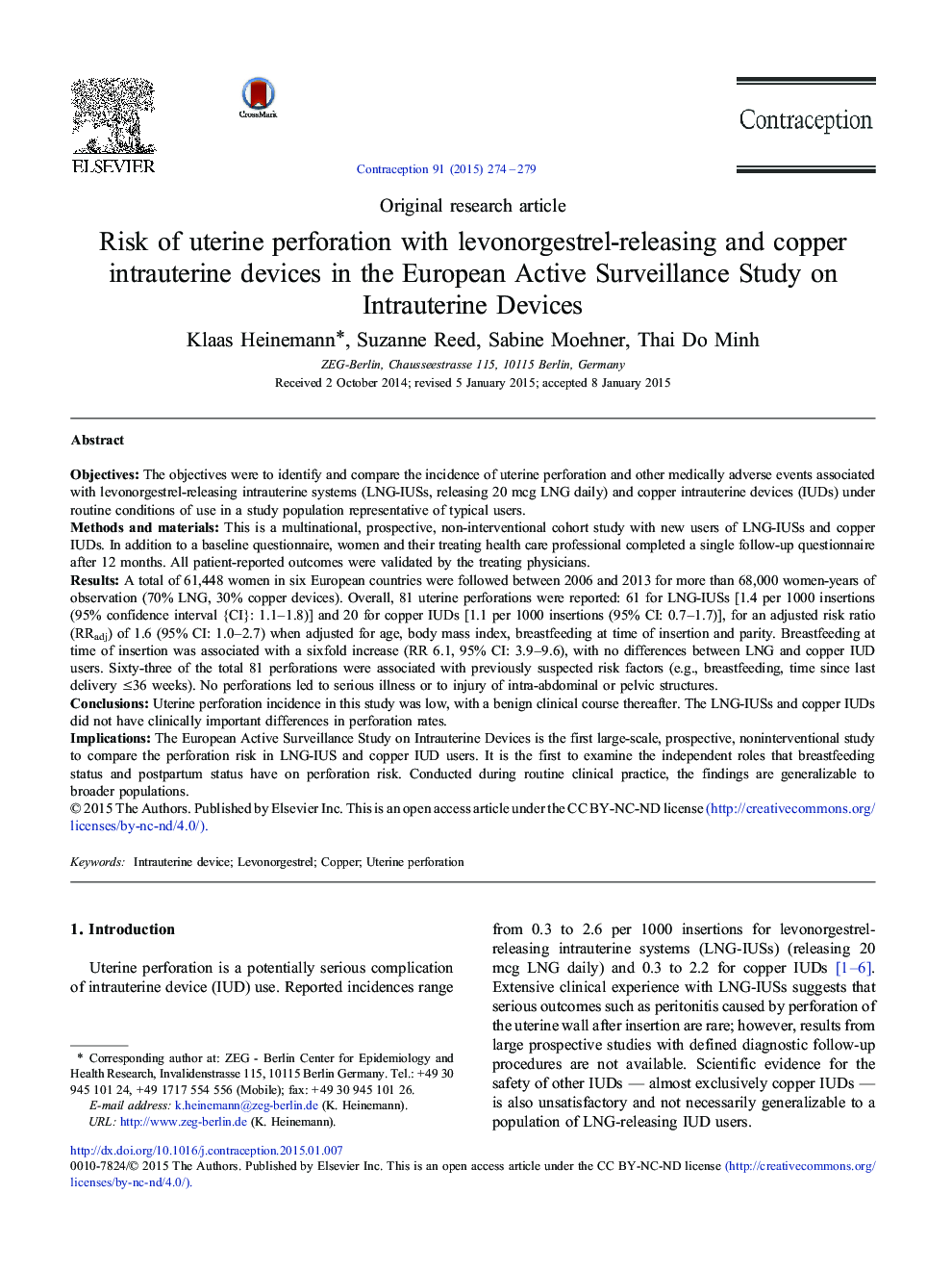| کد مقاله | کد نشریه | سال انتشار | مقاله انگلیسی | نسخه تمام متن |
|---|---|---|---|---|
| 6170702 | 1251414 | 2015 | 6 صفحه PDF | دانلود رایگان |
ObjectivesThe objectives were to identify and compare the incidence of uterine perforation and other medically adverse events associated with levonorgestrel-releasing intrauterine systems (LNG-IUSs, releasing 20 mcg LNG daily) and copper intrauterine devices (IUDs) under routine conditions of use in a study population representative of typical users.Methods and materialsThis is a multinational, prospective, non-interventional cohort study with new users of LNG-IUSs and copper IUDs. In addition to a baseline questionnaire, women and their treating health care professional completed a single follow-up questionnaire after 12 months. All patient-reported outcomes were validated by the treating physicians.ResultsA total of 61,448 women in six European countries were followed between 2006 and 2013 for more than 68,000 women-years of observation (70% LNG, 30% copper devices). Overall, 81 uterine perforations were reported: 61 for LNG-IUSs [1.4 per 1000 insertions (95% confidence interval {CI}: 1.1-1.8)] and 20 for copper IUDs [1.1 per 1000 insertions (95% CI: 0.7-1.7)], for an adjusted risk ratio (RRadj) of 1.6 (95% CI: 1.0-2.7) when adjusted for age, body mass index, breastfeeding at time of insertion and parity. Breastfeeding at time of insertion was associated with a sixfold increase (RR 6.1, 95% CI: 3.9-9.6), with no differences between LNG and copper IUD users. Sixty-three of the total 81 perforations were associated with previously suspected risk factors (e.g., breastfeeding, time since last delivery â¤36 weeks). No perforations led to serious illness or to injury of intra-abdominal or pelvic structures.ConclusionsUterine perforation incidence in this study was low, with a benign clinical course thereafter. The LNG-IUSs and copper IUDs did not have clinically important differences in perforation rates.ImplicationsThe European Active Surveillance Study on Intrauterine Devices is the first large-scale, prospective, noninterventional study to compare the perforation risk in LNG-IUS and copper IUD users. It is the first to examine the independent roles that breastfeeding status and postpartum status have on perforation risk. Conducted during routine clinical practice, the findings are generalizable to broader populations.
Journal: Contraception - Volume 91, Issue 4, April 2015, Pages 274-279
